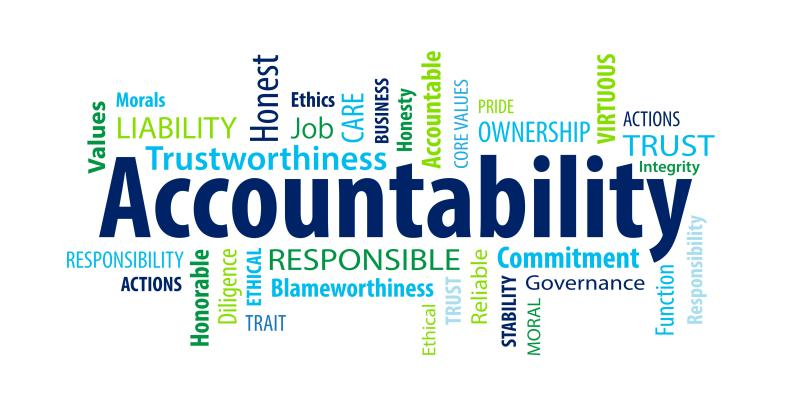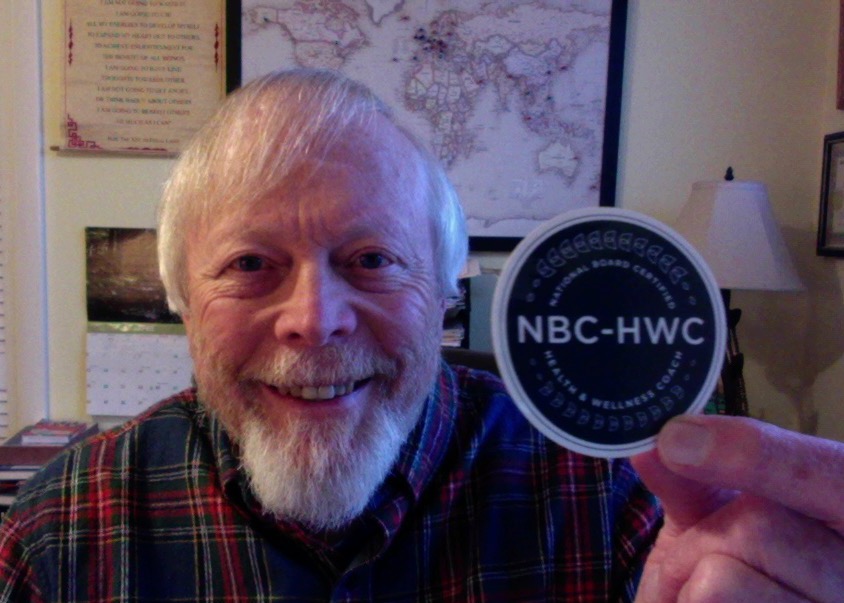Structuring Great Wellness Coaching Sessions – Part 3 Accountability and Support

This is the third of a three-part series on Coaching Structure. In our first blog we showed how a coach can use structure by Co-Creating The Agenda for the session to get off to a great start. In our second blog – Structuring Great Wellness Coaching Sessions – Part 2 Process and Progress we explored how effective processing leads to insight, understanding and paves the way to co-creating the Next Steps the client needs to create progress.
The Accountability Agreement
As we finish up our Next Steps part of the coaching structure in our session, we still need to arrive at clarity with our client about how they will be holding themselves accountable to follow through on their Next Steps and how we, the coach, can help.
You might say that if there was a singular contribution of coaching, in general, that put it on the map, it was accountability. In the early development of life coaching/business coaching, etc., clients sought out a way to be more accountable to themselves to accomplish the goals they were striving for. Sometimes the client was in a business structure where they were at the top of the reporting chain, so who was helping them be accountable? The value coaches provided with accountability quickly demonstrated that coaching was worth investing in.
The Key to Effective Accountability
Ultimately a client is accountable to themselves. Their coach is not their supervisor, manager, teacher or parent. The key is to set up and continuously convey through carefully chosen language that the client is accountable to themselves, not the coach. Accountability needs to be felt internally not as an external force applied by someone else. Yet, the coach needs to do something to help the client with accountability. How do they do it?
The coach supplies two things:
• A rationale for the importance of accountability and tracking behavior.
• The structure which the client uses to make accountability work and continue to create progress.
Tracking Behavior
Clients have often attempted to make lifestyle improvements without the aid of a true Wellness Plan. They sometimes have not even kept track of their progress in a measurable way. A target is set ( X number of pounds, a certain distance covered in a race, for example) but the day-to-day grind of getting to that target can fade away without consistent persistence and feedback. Not having a clear picture of how consistent the client is being allows for self-deception to leak in. The person “thinks” that they are exercising regularly, but are they?
Research shows us that the people who self-monitor their wellness efforts succeed the most. (https://www.obesityaction.org/resources/self-monitoring-the-way-to-successful-weight-management/) While it may be laborious to keep a food log, or even to use a phone app, the results support the effort. When self-monitoring is combined with live coaching (as opposed to simply the use of a digital app alone) it would seem we have the best of both worlds.
One of the best questions in coaching is: “How will you know when you are being successful?”
When the coach asks this question, even the most reluctant client will admit that they have to figure out some way to keep track of their efforts. It’s not always easy. I remember one client who said, “I like to track things…when I’m being successful!” However, facing the lack of progress can spur the coach and client on to examining strategies and making adjustments.

Co-creating Accountability Agreements
Maintaining the Coaching Mindset is crucial to setting up effective accountability agreements. This is where a Client-Centered Co-Creative Approach works best. When a coach slips into the prescriptive, consultative mindset we hear words like this:
• “I want you to…”
• “I need you to…”
• “You ought to…”
• “You should…”
“I want you to walk four days for twenty minutes each time next week.” “You ought to be drinking at least X number of ounces of water each day.” It’s easy to take charge and state what you, the coach, thought was obvious from your conversation around Next Steps. When the coach does this, they take power and autonomy away from their client.
How much different it sounds when the Coaching Mindset comes through. “So, you’ve decided on walking between now and our next appointment. Tell me about how often and how long to walk would be right for you to have a successful week.”
Accountability Methods
The most common form that accountability takes is when the client agrees to a commitment to simply report on their progress at the next coaching session. This usually works very well for most Action Steps. Coach and client write down this commitment and the coach makes sure to ask about it at the Check-In portion of the next coaching appointment.
At times, however, a lapse of seven to fourteen days between appointments may not be optimal for practicing a new behavior or seeking to make progress on an action steps that requires greater frequency. For example, beginning practicing relaxation training needs to be done fairly often during a week. Especially because it is a very new behavior to remember to perform, a system of more frequent accountability may work better. Let’s say that our client recognizes this (perhaps because the coach challenged them around it) and knows they need to connect with their accountability resource (the coach) more often. Coach and client agree that the client will email or text the coach every second or third day and report on their progress.
Don’t be a reminder service. As we say, “There are apps for that.” When a client asks for a reminder to perform their Action Step you and your client are best off if your gently refuse. Offer instead to have the client contact you (email, text, etc.) when they have actually completed the behavior. This encourages greater self-monitoring by the client and more independence which will pay off in the long run.
When wrapping up the session, here’s another important tip:
Ask your client to recall and restate to you what they have made commitments to doing as Action Steps, and how Accountability will work. This has much more power than when you tell them what has been agreed to.

The Importance of Support
Coaching for Connectedness is a vital part of Health & Wellness Coaching. We know that people who lack social support have much higher rates of all the major chronic health challenges. Exploring what sources of support a client has is an essential part of any initial Discovery or Foundation Session. When clients lack support we may see if our client wants to make that an Area of Focus for their Wellness Plan and consciously work on expanding it.
Unfortunately, coaches don’t always include checking out support as part of the Coaching Structure. When we have co-created an Action Step with our client it is important to ask:
“So, who or what else in your life can support you in doing this?”
Make this question part of how you conclude working on each and every Action Step. You, the coach will be providing support but how else can our client find support for their wellness efforts?
The Wind Beneath Your Wings
Help your client to seek out and distinguish who or what in their life will be a positive and encouraging source of support. Critical, negative, cynical and sarcastic people need not apply! Support from positive people can be the “Verbal Persuasion” or cheering on that Albert Bandura talks about as a way to build Self-Efficacy. (See my blog “Lessons From Albert Bandura For Wellness Coaches” Perhaps even more powerful is the type of support where others actually do the same activity as the client’s action step, and do it with them. This may take the form of an individual such as a walking buddy, or a group, such as a hiking club. Also, don’t forget about sources of support like a pet dog – the four-legged fitness trainer!

Internal Barriers and How to Ask for Support
Involving others in one’s Wellness Plan seems like a no-brainer, but such is not always the case. Your client may be inhibited to do so for various reasons. Explore their reluctance with them. You may discover that your client sees it as a sign of weakness to ask others for help. They may have had severe lessons about this earlier in their lives. They may also be embarrassed to involve others until they have had a measure of success on their own. Imagine the overweight client who doesn’t want to share yet another weight-loss effort with their friends until they feel better about their own progress.
A frequent source of support that is called upon by many clients is their partner, spouse, etc. Here the vital step may be having a crucial conversation with that person about exactly how they can be supportive, and to identify exactly what is not helpful. The coach can help with rehearsal conversations and by offering to set up accountability around just setting a time for the client to have their important conversation with their partner.
Wrapping Up
In the last couple of minutes, it’s time to wrap up the coaching session. Coaches can do this in a number of ways.
• Summarize the highlights of the sessions ¬– what was covered.
• Ask the client to share what their “take-aways”, their essential learnings from the session were.
• Ask the client to repeat what their Action Steps will be between now and the next appointment and what Accountability will be for each.
• Confirm the next appointment.
• The coach may or may not add a comment from the “Metaview” – the Big Picture of the course of the coaching to give perspective on the client’s progress.
• The coach my share something inspiring, often in the form of Acknowledgement of the client’s efforts at lifestyle improvement.
Coaching structure is your friend. Don’t make it your master. Use it well and at the same time be ready to “Dance In The Moment”.

Michael Arloski, Ph.D., PCC, NBC-HWC is CEO and Founder of Real Balance Global Wellness Services, Inc. (www.realbalance.com). Dr. Arloski is a pioneering architect of the field of health and wellness coaching. He and his company have trained thousands of coaches around the world. Dr. Arloski’s newest book is Masterful Health & Wellness Coaching: Deepening Your Craft https://wholeperson.com/store/masterful-health-and-wellness-coaching.html








Only registered and logged in readers can leave comments.